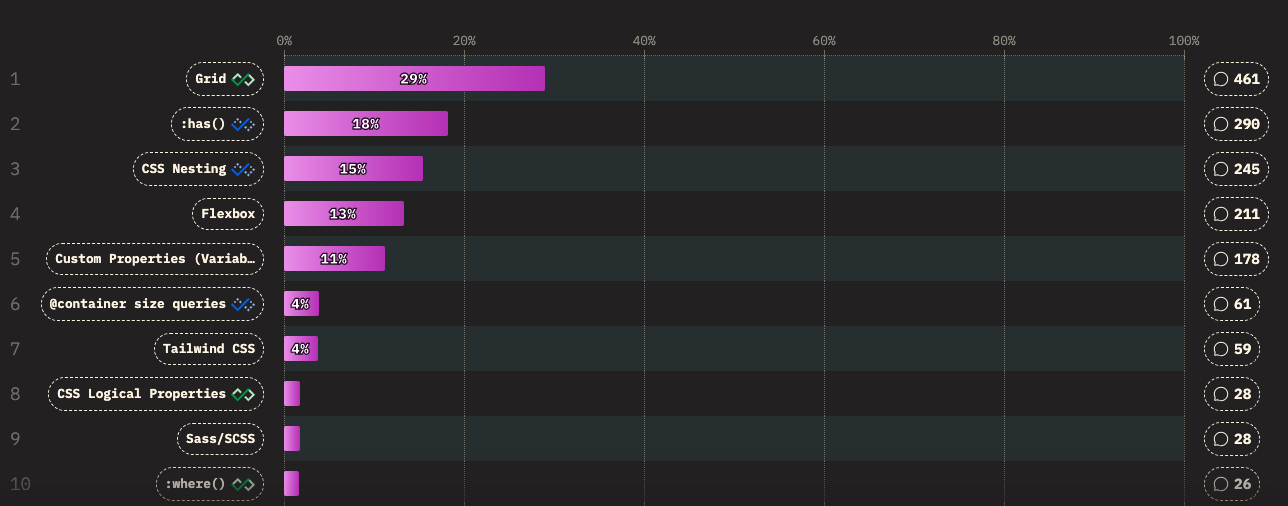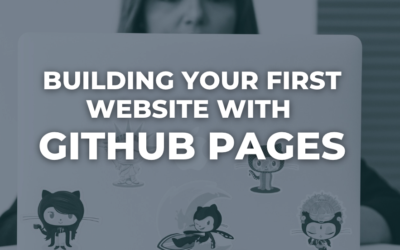Over the past five years, a handful of new CSS features have completely reshaped how we build for the web. According to the 2025 State of CSS Survey, these are the true game-changers:
1. CSS Grid (29%)
Grid made full-page layout a native capability of CSS. No more floats, hacks, or heavy frameworks, just powerful two-dimensional control that makes responsive design faster and more creative.
2. :has() Pseudo-Class (18%)
Dubbed the “parent selector,” :has() lets you style an element based on what it contains. What once required JavaScript, like styling a form with invalid fields, can now be done with pure CSS.
3. CSS Nesting (15%)
Borrowed from Sass and Less, nesting brings organization and clarity directly into native CSS. It reduces duplication and makes maintaining large stylesheets more efficient.
4. Flexbox (13%)
Flexbox revolutionized one-dimensional layouts, making alignment and spacing simple. While Grid has taken over full-page structures, Flexbox remains indispensable for components and UI elements.
The Big Shift:
Together, these features have reduced the need for preprocessors and JavaScript, while giving developers cleaner, more expressive tools. CSS has grown up, and building modern interfaces has never felt more straightforward.
Developer Confidence Is Growing
Happiness with CSS continues to climb, with most developers rating their satisfaction around 4 out of 5. After years of frustration with hacks and workarounds, modern CSS feels powerful and reliable.
Web Apps Drive CSS Innovation
Nearly three-quarters of respondents say they’re using CSS for web apps, making it the top use case by far. Traditional websites and landing pages matter less, complex, app-like UIs are driving the evolution of CSS.
Adoption Is Still Catching Up
While awareness of new features is high, actual adoption lags. Many developers have read about tools like container queries or the View Transition API, but fewer have put them into production. CSS is ahead of its own curve.
Browser Support Is Less of a Headache
For years, inconsistent browser support was the #1 pain point. In 2025, only about 10% flagged it as a major issue. That’s still significant, but a huge improvement as vendors continue to align on specs.
Game-Changing Features
When asked which features had the biggest impact in the past five years, four stood out:
- CSS Grid (29%): finally delivering full two-dimensional layouts.
:has()(18%): the long-awaited “parent selector” that replaces countless JavaScript hacks.- CSS Nesting (15%): bringing Sass-like structure into native CSS.
- Flexbox (13%): still the backbone of one-dimensional layout, even as Grid takes over for full-page structures.
What Developers Want Next
The wish list for future CSS is clear: mixins, masonry layouts, conditional logic, and loops. In other words, developers want CSS to be even smarter and more dynamic.






0 Comments